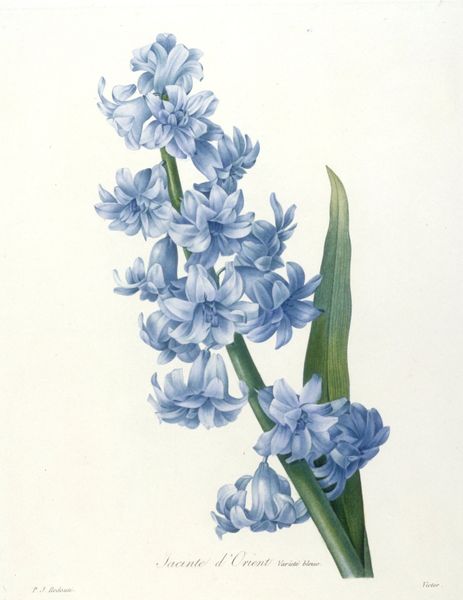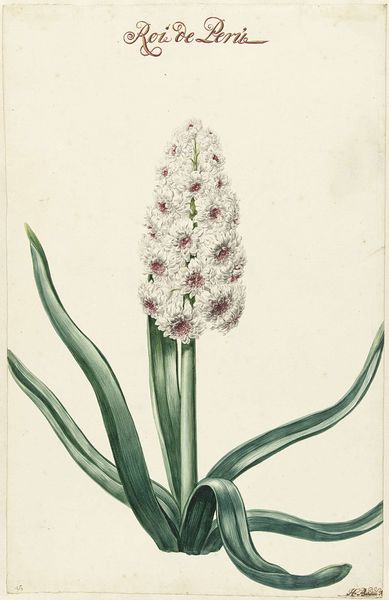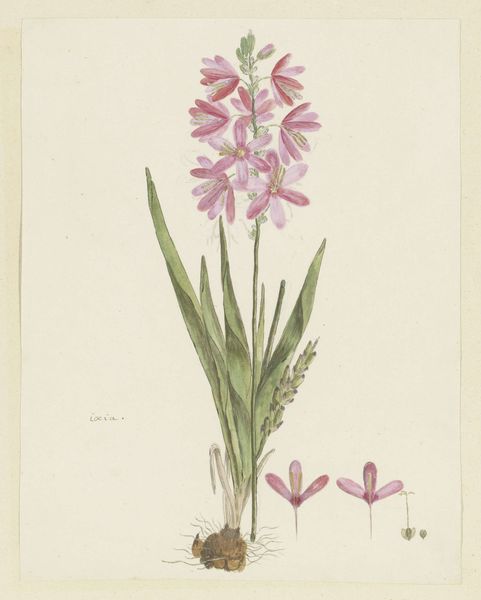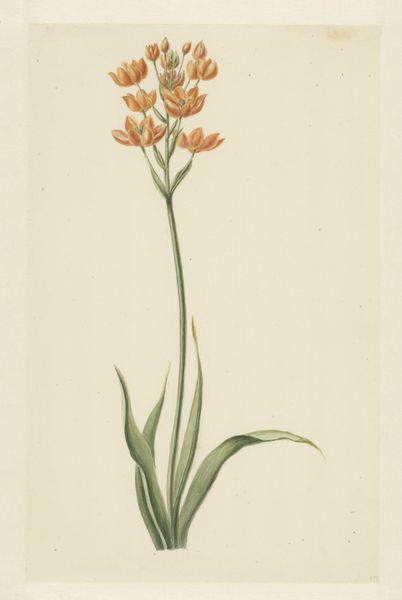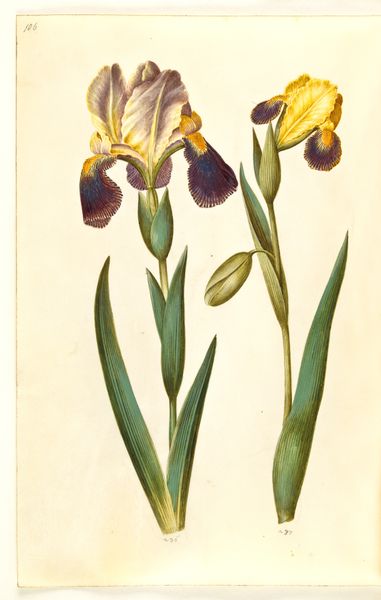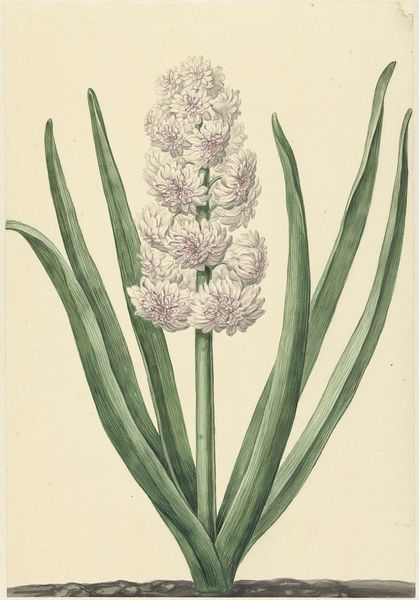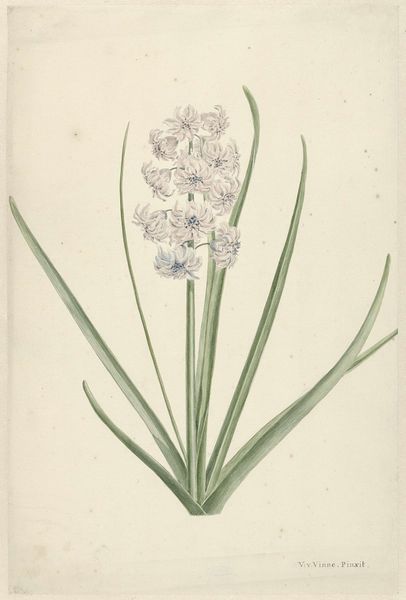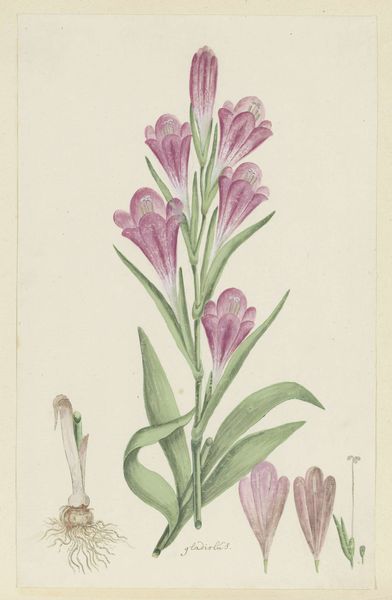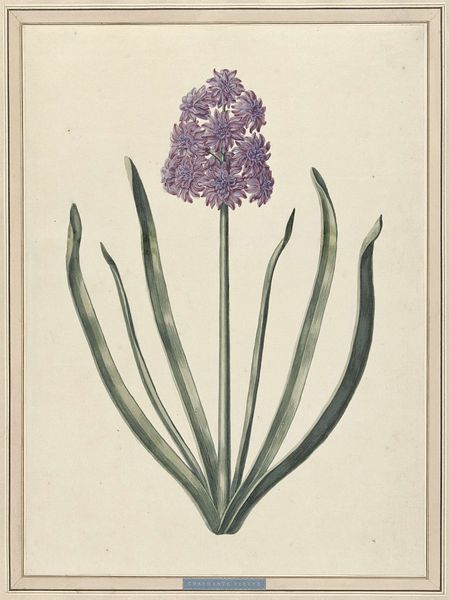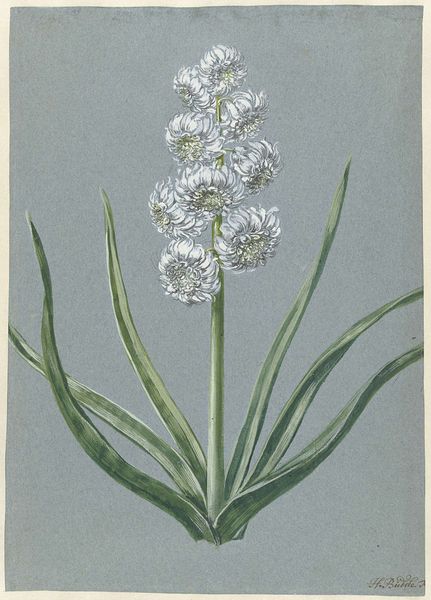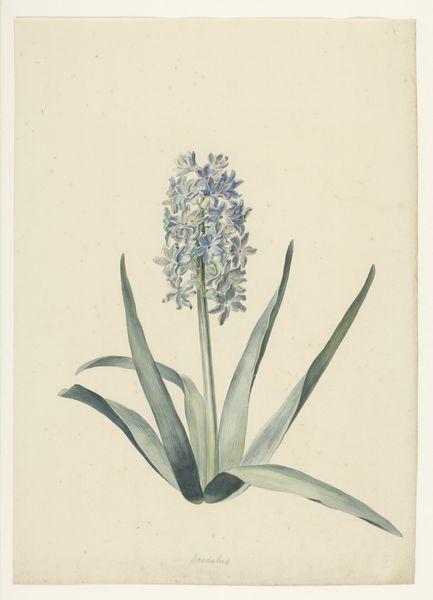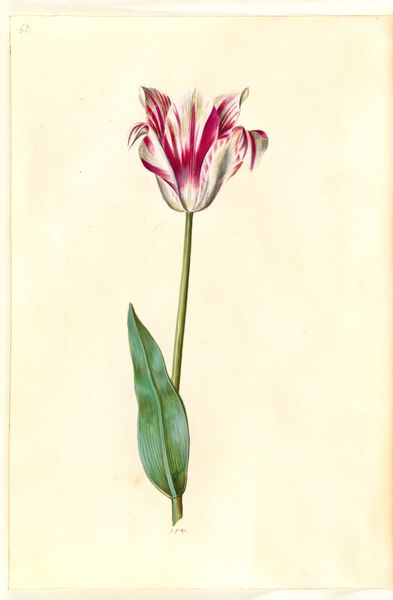
drawing, print, watercolor
#
drawing
# print
#
oil painting
#
watercolor
#
france
#
watercolour illustration
#
botanical art
#
watercolor
Dimensions: 11 x 8 1/2 in. (27.94 x 21.59 cm) (plate)
Copyright: Public Domain
Curator: Let’s turn our attention to this delicate botanical print. This is ‘Jacinthe d'orient variété rose,’ or 'Hyacinth' by Bessin, dating to 1827. It resides here at the Minneapolis Institute of Art. Editor: My first thought is how meticulously crafted it is! It's an elegant and almost serene composition, despite the botanical accuracy. Curator: Indeed. Bessin's rendering highlights the subtle gradations of pink in the flower petals. Note also the stark contrast against the white background and how the plant is framed. We might interpret this compositional choice as emblematic of an ordered and categorized understanding of the natural world, which, in this case, supports Enlightenment principles of reason and science. Editor: Perhaps, but botanical art wasn't solely about scientific cataloging. Consider the gendered context: floral imagery was very much aligned with the domestic sphere and acceptable pastimes for women of the era. Is it possible Bessin's work transcends the binary of art and science to instead illuminate a distinctly feminine perspective on the environment, offering not just classification but an intimate portrayal? Curator: That’s insightful. Thinking of the individual brushstrokes and textures, there’s undeniable skill displayed here. The stippling in the flower itself to the subtle shadowing defining the curves of the petals. Bessin is in complete control of their medium. Editor: Precisely! And perhaps that very control—expressed through an art form historically tied to female creativity and decoration—was quietly subversive. By excelling in it, maybe Bessin carved a space for her own expression within social limitations. What looks simply pretty at first glance could actually reflect something quietly powerful. Curator: A compelling argument. It challenges the assumption that technical skill excludes deeper social and political significance. Editor: It reminds me that the quietest forms can sometimes carry the most resonating impact. There is still much to uncover.
Comments
No comments
Be the first to comment and join the conversation on the ultimate creative platform.
